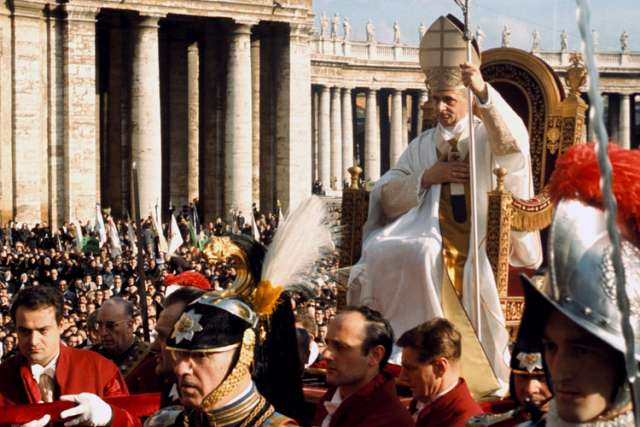Paul VI died in 1978 after a 15-year pontificate. He is remembered by many for his 1968 ban on contraception and as the first pope to visit Israel before the Vatican officially recognized the Jewish state.
The Vatican said Francis had approved the decree authorizing the beatification of his predecessor, less than two weeks after the canonization of two other iconic popes of the 20th century — John XXIII and John Paul II.
The beatification ceremony is scheduled to take place Oct. 19 at the end of the Synod of Bishops’ meeting on the family in Rome.
At least one miracle is required for beatification, and a second miracle is normally required for sainthood. Francis, however, waived the second miracle requirement in the case of John XXIII. It is unclear whether Paul VI, born Giovanni Battista Montini, will be similarly fast-tracked.
Paul was elected in 1963 and implemented the reforms started by his predecessor, John XXIII, with the Second Vatican Council (1962-1965). During Paul’s pontificate, he wrote seven encyclicals, including the Humanae Vitae (Of Human Life), published in 1968, which outlined a hard-line position on birth control.
The Vatican did not confirm details of the recognized miracle, but according to a report in Credere, the weekly magazine of the Pauline Fathers, it involved the birth of a baby in California in the 1990s.
In a recent report, the magazine said the fetus was in a critical condition during the 24th week of the pregnancy and doctors advised the woman to terminate the pregnancy. Instead, she reportedly placed an image of the late pontiff and a remnant of his vestments on her stomach and began praying to him.
The baby was born healthy at the 39th week of the pregnancy and witnesses were unable to explain the change in the baby’s condition. The Vatican launched official inquiries into the case in 2003, and medical experts officially confirmed the inexplicable nature of the child’s recovery last year.


